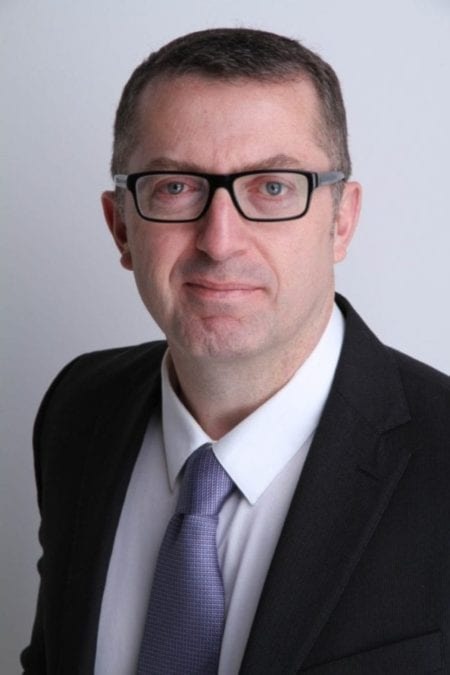A proposed railway and many more cargo ships are the major concerns Baffinland Iron Mines’ CEO Brian Penney is hearing about in relation to the miner’s phase two expansion proposal, which would increase shipping to 12 million tonnes per year.

Penney said there’s misconceptions that the railway would reduce jobs for Inuit. He said there are only three or four existing Inuit truck drivers who go back and forth on the tote road from the mine to the port. However, Inuit represent close to 40 per cent of truck drivers at the mine site and the number of trucks at Mary River will rise dramatically if phase two proceeds.
“Anyone that drives a truck is going to be trained on driving trains,” the CEO said. “Inuit employment is only going to grow at Baffinland under all scenarios… we’re going to continue to build skills within the communities, to build skills that will make the workforce of the future for Baffinland. And hopefully someday Baffinland will be run by Inuit, totally.”
The company’s phase two expansion proposal would see a 110-km rail line stretching north from Mary River to Milne Inlet. The trains would pull up to 176 rail cars carrying iron ore. Baffinland is also seeking to retain approvals for a second 150-km rail line that would run south to Steensby Inlet. The latter route would represent a further expansion over the next several years.
In regards to shipping, Penney noted that Baffinland transported a record 5.1 million tonnes of iron ore last year. That entailed seventy-one voyages by cargo ships. He insisted that there were no significant repercussions for marine life, but Penney acknowledged that having shipping more than double through phase two brings uncertainties.

“That’s a tough one,” he said. “We have lots of science that states that we are not impacting (aquatic life)… in all the years we’ve never had one interaction with marine wildlife, zero. We have lots of monitoring programs on an annual basis.”
He added that traditional knowledge is also being incorporated in studies. If caribou are impacted in the Eclipse Sound area, Baffinland is prepared to compensate hunters and trappers, said Penney.
Having the support of the surrounding communities and the Qikiqtani Inuit Association (QIA) is critical for Baffinland. But even with the renegotiation of the QIA’s Inuit Impact Benefit Agreement (IIBA) in October, which brought about greater benefits and more training initiatives for Inuit, Penney isn’t certain of a QIA endorsement.
“I’m expecting the QIA to do the responsible thing for their communities and to protect the environment, and I’m confident that we will deliver on all that. As such, they will support (phase two),” he predicted. “It’s a rare expansion that actually provides a lower environmental footprint when complete.”
Penney pointed to improved dust suppression and lower fuel use as examples of how Baffinland will reduce pollution at Mary River, 160 km south of Pond Inlet.
Levi Barnabas, a member of the QIA’s executive committee who’s responsible for the Mary River file, was non-committal about the Inuit organization’s position on phase two.
“QIA will present its views on the project during this formal review process. QIA’s views will be based on the application presented by Baffinland,” Barnabas stated.
He expressed positive sentiment in regards to the recently enhanced IIBA, however.
“QIA feels that this work has improved clarity of responsibilities and can better focus on delivery of benefits to Inuit,” said Barnabas. “QIA is confident that there is renewed commitment toward training, including improved clarity on short and long-term goals and planning.”
In the Nunavut legislative assembly on Feb. 28, Economic Development Minister David Akeeagok offered encouraging, although qualified, sentiment.
“At this time, since (Baffinland’s phase two proposal) is still under review, we can’t state that we are in a position to say one way or another. Nevertheless, we do support it in principle,” said Akeeagok. “On a personal level, I support this idea but know there needs to be a thorough review and especially if the plans are solidly based on facts during the public review of the proposal, where they will listen to members of the public.”
Mending fences with QIA
Penney admitted that Baffinland and the QIA have had an “uneasy relationship” over the years.
“The QIA were rightly frustrated that we weren’t making progress,” said Penney.
He explained that Baffinland was essentially “underwater” economically in 2015-16 due to extremely low iron ore prices and high operating costs, limiting what the company could afford to do.
“We were relying on shareholders to pay our bills. It was a tough time for the iron ore industry and it was a tough time for Baffinland,” Penney said.
Iron ore prices stabilized over the next few years and have shot up over the past year. With the railway and greater production in place, Baffinland would be in line to become “the lowest cost producer in North America,” Penney forecasted. He said that would give the company a buffer when iron ore prices drop again in the future.
“This is operational certainty for a long, long time by going to a railway operation,” the CEO said, adding that approval of phase two underpins the recent pledges that Baffinland made to the QIA in the renegotiated IIBA.
A Nunavut Impact Review Board technical meeting regarding Baffinland’s phase two proposal is scheduled for April 8-10 in Iqaluit. The meeting will address many aspects of the proposed iron mine expansion, including environmental impacts, accident response and shipping considerations.
The review board’s recommendation on Baffinland’s phase two expansion is expected in November.
